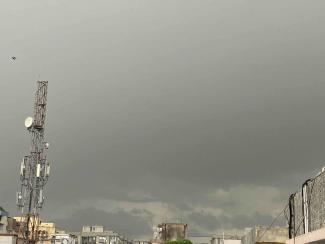Predicting Monsoon
Indians are, by nature, emotive. Unfortunately, they believe in overreacting. So, be it 26/11, Swine flu, or a draught-like situation: mostly, they react excessively. They cannot even take a loss by a cricket team sportingly, so naturally, they are bound to start the blame game when drought is at the doorstep. What better punching bag could be than the Indian Meteorological Department (IMD)? Few intellectuals are even asking for its closure.
Forecasting is anticipating the future and can go wrong. Interestingly, 9/11 was not predicted, but nobody closed the Rand Corporation or CIA. 26/11 was not anticipated, but RAW and IB are still functional. But just one bad monsoon, and up comes a bizarre suggestion that IMD should be closed.
Unfortunately, weather science has always remained less understood and debated in India. Average Indian always feels that if Americans can get the weather forecast right, why can’t we? Little did they know that they also go wrong. The other argument is that if we can manufacture cars and missiles and send satellites to space, then why can’t we forecast the weather correctly? However, technology transfer is not possible in regard to weather forecasting because tropical and extra-tropical weather systems have no commonalities. Our geography is different from theirs. More importantly, weather science has neither significant commercial utility nor ‘nuisance’ value! So, technocrats, economists, and politicians have less interest in it. Naturally, no pressure groups or opinion makers are interested in this field. No so-called glorification of achievements or ‘shortcomings’ of weathermen is done, which is otherwise found rampantly happening in various other facets of life.
It is understandable that a monsoon forecast failure agitates the entire country. India is still largely an agricultural economy, so monsoon rains are important. The country's drinking water infrastructure has such severe limitations that even one monsoon failure is not tolerable. Hence, there is a need to have a basic understanding of how monsoon forecasting is done and why it could go wrong.
The Indian peninsula is a vast landmass surrounded by seas on three sides. It receives rainfall of varying intensity throughout the year. The Indian summer monsoon exhibits variability on a wide variety of space and time scales, which is critical to the agriculture sector. This intra-seasonal monsoon variability manifests itself as a series of wet and dry weather spells.
The peninsula gets engulfed by monsoon currents between June and September. However, the primary rain-bearing months of this season are July and August. During the last fifteen to twenty years, the monsoons have shown normal behaviour for over a decade, with years typical of drought (1987) and flood (1988) situations.
The monsoon prediction was made based on the “15 Parameter model” for over a decade. Now, IMD is following the practice of issuing a forecast based on eight predictors for seasonal rainfall over the country. These predictors cover almost the entire land and ocean mass of the world. Like monsoon, behaviour depends upon the temperature of northwest Europe, the sea surface temperature of the North Atlantic, and winds over the North Pacific. Besides their model, IMD also considers the model forecasts of other scientific organizations within the country, like the Indian Institute of Tropical Meteorological, IISc, etc. and international organizations, such as the World Meteorological Organization and American Environmental Centers. This year, statistical models suggested below-normal rainfall and dynamical models suggested above-normal rainfall.
All these models have various limitations; normally, the model accuracy is five to nine per cent on either side. Since the monsoon season is yet to be over, it would be premature to comment on the efficacy of these models. It needs to be understood that forecasting depends on the behaviour of various parameters, and some of them still confuse the forecaster. Few feel there is no direct link between El Nino and delayed monsoons, but it is still an important parameter for forecasting in many other parts of the world. Different parameters like the Madden-Julian Oscillation (MJO) index help gauge the eastward progress of tropical rain.
IMD, borne in 1875, has a significant mandate beyond monsoon forecasting. It has a huge network of observatories running in a few thousand throughout the country, mountains and even oceans. It is involved in various activities, from aviation foresting to ozone layer monitoring to tsunami and earthquake predictions and monitoring. It uses satellites, radar, supercomputers, and other state-of-the-art techniques for weather observations, monitoring, and forecasting. Over the years, it has mastered the art of cyclone prediction.
Experience this year (2009) so far will force IMD and other organizations to take a fresh look at the efficacy of their existing models. But at the same time, it needs to be understood that the forecast could go wrong even in the future because even today, we understand so little about our atmosphere. Armed chair analysts should stop discouraging scientists with sweeping statements like ‘need to close the IMD’ just because they are not getting sufficient power to run their air conditioners!
